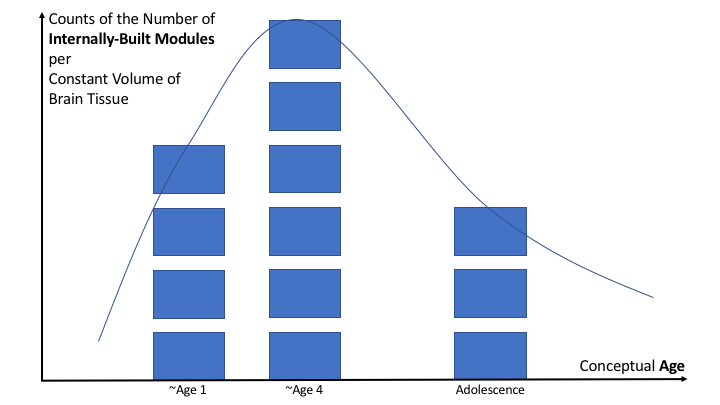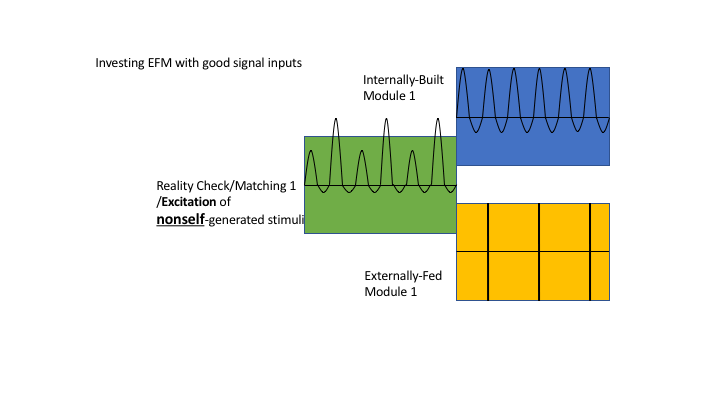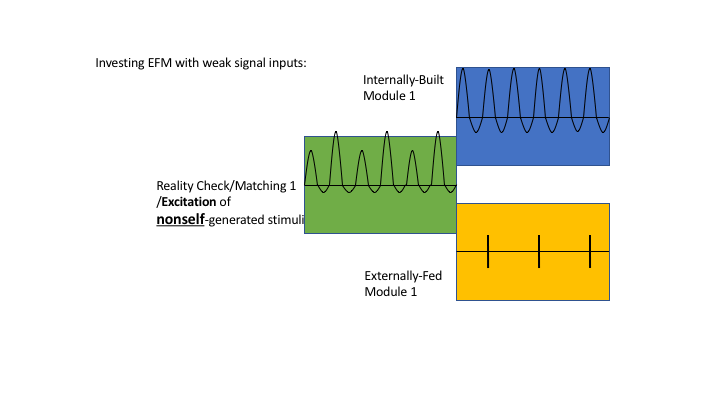Version 1.8
Citation in APA style:
Chen, C.-M.A. (2018, October 21). Over-arching theory of human brain energy consumption in goal-related behaviors. Retrieved from https://translab.psy.uconn.edu/theory/
Over-arching theory of human brain energy consumption in goal-related behaviors
Created on 10/21/2018 by Chi-Ming A. Chen, PhD
Last updated on 9/30/2019 by Chi-Ming A. Chen, PhD
The theory aims to explain how human brain processes self- and non-self-generated stimuli under the limits of current and future energy consumptions. From a neurophysiological perspective, it is based on developments of neuronal synapses. From a conceptual perspective, it is based on the interactions between energy consumptions and actions (both physical and mental acts). The theory explains the whole spectrum of human acts from normal to abnormal. Examples of clinical symptoms, such as auditory hallucinations, are provided and discussed.
The present theory focuses on postnatal brains of 2 year-olds and up.
Related theories:
- Blickfeld and blickpunkt by Wilhelm M. Wundt in 1893
- Claude E. Shannon’s Informational Theory (1948)
- Roger W. Sperry’s corollary discharge (1950; similar to the forward model in other fields)
- Filter by Donald E. Broadbent in 1958, attenuation of selective attention by Anne M. Treisman
- Sequential stochastic assignment problem by Derman, Lieberman, and Ross in 1972
Theory Assumptions
1.Energy is limited.
2.Prenatal developments are normal, resulting from genes and environmental stimuli.
3.Neonatal (birth to 1 month) and infancy (1 month to 2 years) developments are normal, resulting from genes and environmental stimuli.
4.Human capacity/full potential is limited by their interactions with environment.
5.Numbers of brain cells of human beings are normally distributed.
6.Finite neuronal synapses, connections, and pathways are developing and modified constantly to balance the supply and demand of energy.
7.There is a bottom-up mechanism in human brain.
8.There is a top-down mechanism in human brain.
Hypothetical Terminology
1.Internally-built module (IBM): ONE internally-built module (IBM) is consisted of internally-built finite temporal and spatial resolution points of ONE of task-required (i.e., attended) sensations. Combined concurrent IBMs represent the internally-built and self-explanatory WHOLE of external environment, leading to human’s top-down perception of external environment.
2.Externally-fed module (EFM): ONE externally-fed module (EFM) is consisted of externally-fed finite temporal and spatial resolution points of ONE of task-required (i.e., attended) sensations. Combined concurrent EFMs represent the externally-fed and factual PART of external environment, leading to human’s bottom-up sensations of external environment.
Module Assumptions
1.Internally-built and externally-fed modules are built upon the postnatally-developed brain.

2.Modules are acquired and updated by experiences.
3.Default goals (e.g., survival related goals) determine which default IBMs and EFMs to be set, equivalent of Wilhelm Wundt’s blickfeld.
4.Task goals determine which task IBMs and EFMs to be set, equivalent of selective attention or Wundt’s blickpunkt (i.e., the pair of task-orientated/attended IBMs and EFMs is selective attention).
5.Multiple IBMs and EFMs could be set at the same time.

6.There is an upper limit of how many IBMs and EFMs could be set at the same time due to the limits of the totals of finite temporal and spatial resolutions of IBMs and EFMs.
7.The limit of IBMs and EFMs is the capacity of individual’s sustained attention.
8. Any specific goal-orientated behavior requires multiple IBMs and EFMs; e.g., there are multiple “default” IBMs and EFMs monitoring environmental orientations and unexpected events that are outside the scope of the current goal WITH task IBMs and FEMs at the moment.
Examples

